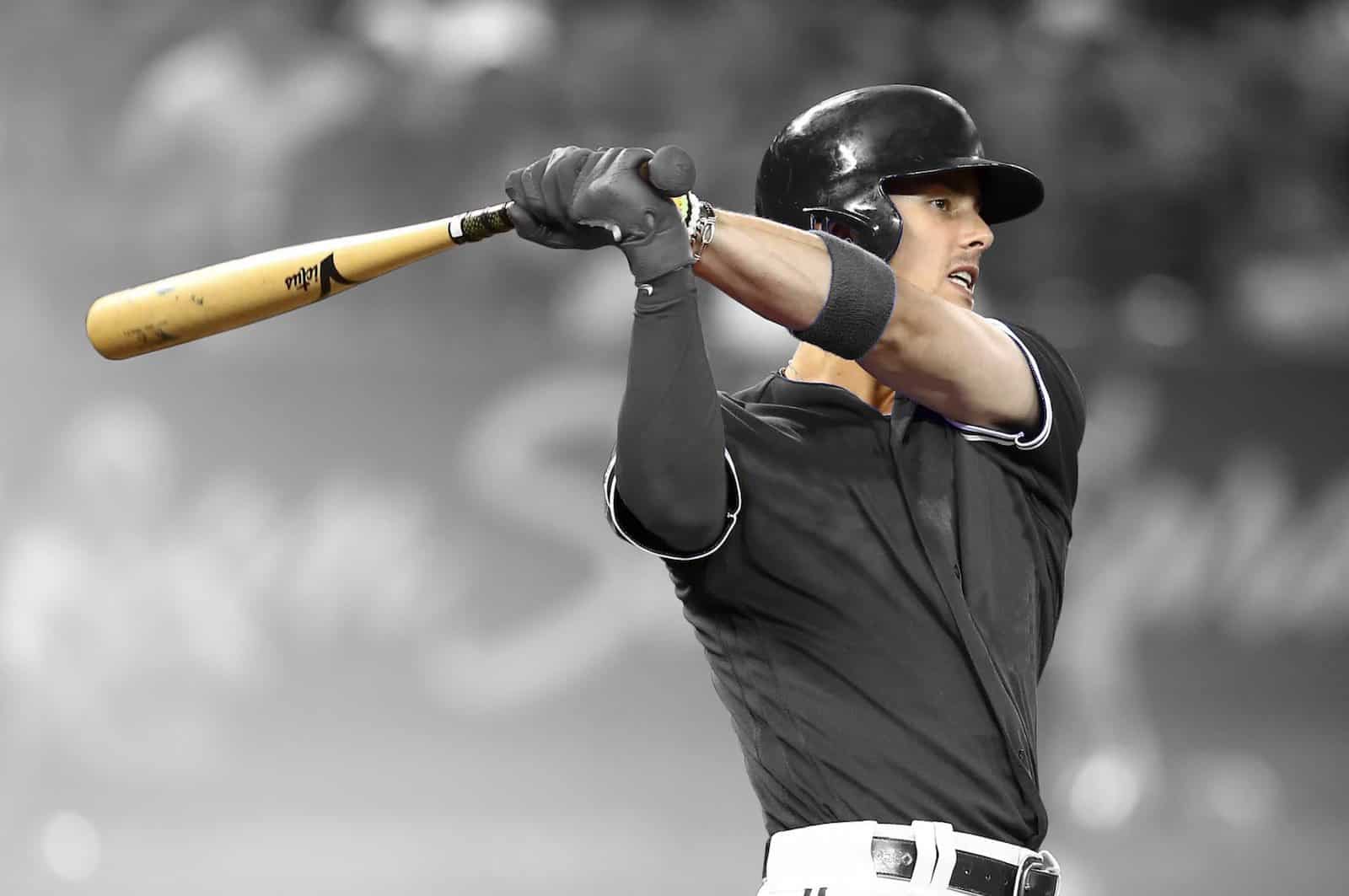In the middle of September, Cavan Biggio joined a top 10 list that likely didn’t wind up on your radar, and was undoubtedly missed by the major sports outlets across the baseball landscape. While it’s not a flashy stat like fastest to 100 home runs, RBI, or runs scored, Biggio’s accomplishment arguably deserves the same type of recognition. On September 12th, Biggio became the 9th fastest player in MLB history to reach 100 walks. Of all the greats that have stepped foot on the field over the years, only 8 other players have reached the centennial mark for walks more quickly than Biggio has. If that seems shocking, it should. This is a stunning achievement and one that should raise his profile quite a bit.
Cavan Biggio is 9th fastest player in MLB history to 100 walks:
— TrueRGM (@TrueRGM) September 13, 2020
Frank Thomas: 124 G
Carlos Santana: 132 G
Bernie Carbo: 134 G
Adam Dunn: 136 G
Mike Fiore: 137 G
Max Bishop: 143 G
Charlie Keller: 144 G
Ted Williams: 144 G
CAVAN BIGGIO: 145 G
While he’s not included in the original tweet, the player who used to occupy 9th on this list is Aaron Judge, and the player who used to be 10th, is Juan Soto. As for the other players on this list, some are immediately recognizable. Ted Williams, Frank Thomas, Adam Dunn, and Carlos Santana are all known, but Benie Carbo, Mike Fiore, Max Bishop, and Charlie Keller likely don’t ring any bells unless you’re a baseball historian.
From the Hall of Famers to the players you’ve never heard of, nobody in this group ended their career with a wRC+ below 100, further illustrating why this achievement for Biggio is notable. Players that get on base at elite rates yield great results. While “Moneyball” brought the idea to the larger public, the concept of ‘just get on base’ isn’t new. Players have always understood this, and while some are more resistant than others to the language of sabermetrics, they all know this idea to be fundamentally true.
When teams and analysts are trying to find indicators for future success, an eye of the strike zone, and a player’s walk rate are among the metrics first looked at. Primarily because they’re both something that the hitter can control. While umpires certainly have slightly different definitions of the exact nature of the strike zone, over the course of a full season, or a career, a hitter’s ability to lay off balls and attack strikes is overwhelmingly in their own hands. For Biggio, this is something that he’s always been adept at.
According to Fangraphs, an average BB% rate is roughly 8%. It fluctuates year to year, but from a historical perspective and a good sample size, 8% is considered average, with 10% representing above average, 12.5% being great, and anything 15% or above rating as excellent. At each of Biggio’s stops in the minor leagues, and into his major league career, he’s never been anything short of above average, and the majority of the time, he’s been excellent.
In Biggio’s first MLB season, he ended with a walk rate of 16.5%, a truly impressive feat. Since the modern era began, there are only 8 other rookies in history with at least 400 plate appearances who produced a walk rate better than or equal to Biggio’s. Again, if this shocks you, it should. Biggio isn’t lucking into an outcome or a prestigious list, but rather creating an approach at the plate that allows him to produce results.
While his 2020 walk rate has fallen, he’s paired it with a significant decrease in his K%. When Biggio came up in 2019, he ended his rookie campaign with a strikeout rate of roughly 29%. Although there’s no one statistical profile that guarantees success or failure for a hitter, a K% that high inherently limits anyone’s potential offensive output, as a significant number of their at-bats are ending without a ball in play. In 2020 however, Biggio has cut down his strikeout rate by 24%, and is sitting at an overall rate of 21.6%.
The one thing holding Biggio back from unlocking his full potential however, is the quality of contact that he’s making. Granted in 2020, nobody has had a normal ramp up schedule, but with over 200 PA’s under his belt, it is worth noting that he sits in the bottom of the league in nearly every batted ball statistic. His exit velocity ranks in the 28th percentile, his hard hit rate just 12th, and his xBA, xSLG, and xwOBA, 11th, 9th, and 27th, respectively. While none of these metrics paint a great picture, it’s also worth mentioning that Biggio performed better across the board last season, which at least indicates he does have more performance in him.
As his career progresses, his walk rate will play an important role in his overall production, just as it did for players like Thomas, Williams, and the lesser known Keller and Carbo. If Biggio can continue to cut down on or maintain his existing strikeout rates, and work on his ability to make better contact at pitches within the strike zone, he’ll undoubtedly have a long and productive career.








